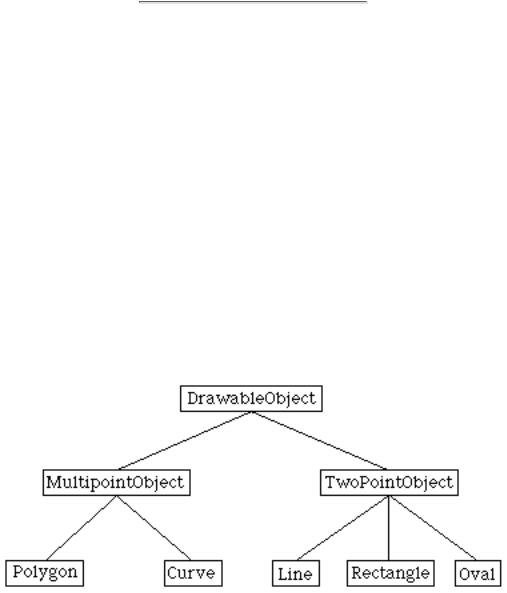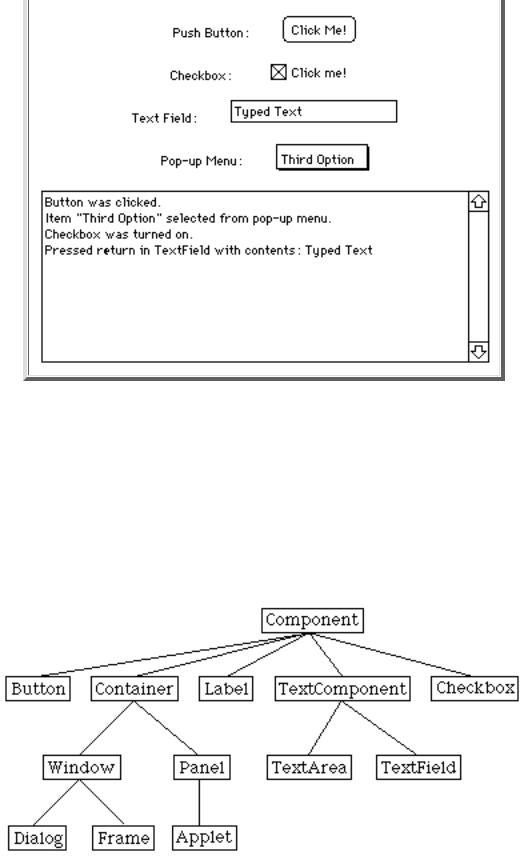
- •Cover Page
- •Java Programming: Contents
- •Java Programming: Preface to the Third Edition
- •Java Programming: Preface to Previous Edition
- •Java Programing: Chapter 1
- •Java Programing: Section 1.1
- •Java Programing: Section 1.2
- •Java Programing: Section 1.3
- •Java Programing: Section 1.4
- •Java Programing: Section 1.5
- •Java Programing: Section 1.6
- •Java Programing: Section 1.7
- •Java Programing: Chapter 1 Quiz
- •Java Programing: Chapter 2 Index
- •Java Programing: Section 2.1
- •Java Programing: Section 2.2
- •Java Programing: Section 2.3
- •Java Programing: Section 2.4
- •Java Programing: Section 2.5
- •Java Programing: Chapter 2 Exercises
- •Java Programing: Chapter 2 Quiz
- •Java Programing: Chapter 3 Index
- •Java Programing: Section 3.1
- •Java Programing: Section 3.2
- •Java Programing: Section 3.3
- •Java Programing: Section 3.4
- •Java Programing: Section 3.5
- •Java Programing: Section 3.6
- •Java Programing: Section 3.7
- •Java Programing: Chapter 3 Exercises
- •Java Programing: Chapter 3 Quiz
- •Java Programing: Chapter 4 Index
- •Java Programing: Section 4.1
- •Java Programing: Section 4.2
- •Java Programing: Section 4.3
- •Java Programing: Section 4.4
- •Java Programing: Section 4.5
- •Java Programing: Section 4.6
- •Java Programing: Section 4.7
- •Java Programing: Chapter 4 Exercises
- •Java Programing: Chapter 4 Quiz
- •Java Programing: Chapter 5 Index
- •Java Programing: Section 5.1
- •Java Programing: Section 5.2
- •Java Programing: Section 5.3
- •Java Programing: Section 5.4
- •Java Programing: Section 5.5
- •Java Programing: Chapter 5 Exercises
- •Java Programing: Chapter 5 Quiz
- •Java Programing: Chapter 6 Index
- •Java Programing: Section 6.1
- •Java Programing: Section 6.2
- •Java Programing: Section 6.3
- •Java Programing: Section 6.4
- •Java Programing: Section 6.5
- •Java Programing: Section 6.6
- •Java Programing: Section 6.7
- •Java Programing: Chapter 6 Exercises
- •Java Programing: Chapter 6 Quiz
- •Java Programing: Chapter 7 Index
- •Java Programing: Section 7.1
- •Java Programing: Section 7.2
- •Java Programing: Section 7.3
- •Java Programing: Section 7.4
- •Java Programing: Section 7.5
- •Java Programing: Section 7.6
- •Java Programing: Section 7.7
- •Java Programing: Section 7.8
- •Java Programing: Chapter 7 Exercises
- •Java Programing: Chapter 7 Quiz
- •Java Programing: Chapter 8 Index
- •Java Programing: Section 8.1
- •Java Programing: Section 8.2
- •Java Programing: Section 8.3
- •Java Programing: Section 8.4
- •Java Programing: Section 8.5
- •Java Programing: Chapter 8 Exercises
- •Java Programing: Chapter 8 Quiz
- •Java Programing: Chapter 9 Index
- •Java Programing: Section 9.1
- •Java Programing: Section 9.2
- •Java Programing: Section 9.3
- •Java Programing: Section 9.4
- •Java Programing: Chapter 9 Exercises
- •Java Programing: Chapter 9 Quiz
- •Java Programing: Chapter 10 Index
- •Java Programing: Section 10.1
- •Java Programing: Section 10.2
- •Java Programing: Section 10.3
- •Java Programing: Section 10.4
- •Java Programing: Section 10.5
- •Java Programing: Chapter 10 Exercises
- •Java Programing: Chapter 10 Quiz
- •Java Programing: Chapter 11 Index
- •Java Programing: Section 11.1
- •Java Programing: Section 11.2
- •Java Programing: Section 11.3
- •Java Programing: Section 11.4
- •Java Programing: Section 11.5
- •Java Programming, Chapter 11 Exercises
- •Java Programming, Chapter 11 Quiz
- •Java Programing: Appendix 1 Index
- •Java Programing: Appendix 1, Section 1
- •Java Programing: Appendix 1, Section 2
- •Java Programing: Appendix 1, Section 3
- •Some Notes on Java Programming Environments

Java Programing: Section 1.5
Section 1.5
Objects and Object-oriented Programming
PROGRAMS MUST BE DESIGNED. No one can just sit down at the computer and compose a program
of any complexity. The discipline called software engineering is concerned with the construction of correct, working, well-written programs. The software engineer tends to use accepted and proven methods for analyzing the problem to be solved and for designing a program to solve that problem.
During the 1970s and into the 80s, the primary software engineering methodology was structured programming. The structured programming approach to program design was based on the following advice: To solve a large problem, break the problem into several pieces and work on each piece separately; to solve each piece, treat it as a new problem which can itself be broken down into smaller problems; eventually, you will work your way down to problems that can be solved directly, without further decomposition. This approach is called top-down programming.
There is nothing wrong with top-down programming. It is a valuable and often-used approach to
problem-solving. However, it is incomplete. For one thing, it deals almost entirely with producing the instructions necessary to solve a problem. But as time went on, people realized that the design of the data structures for a program was as least as important as the design of subroutines and control structures. Top-down programming doesn't give adequate consideration to the data that the program manipulates.
Another problem with strict top-down programming is that is makes it difficult to reuse work done for other projects. By starting with a particular problem and subdividing it into convenient pieces, top-down programming tends to produce a design that is unique to that problem. It is unlikely that you will be able to take a large chunk of programming from another program and fit it into your project, at least not without extensive modification. Producing high-quality programs is difficult and expensive, so programmers and the people who employ them are always eager to reuse past work.
So, in practice, top-down design is often combined with bottom-up design. In bottom-up design, the approach is to start "at the bottom," with problems that you already know how to solve (and for which you might already have a reusable software component at hand). From there, you can work upwards towards a solution to the overall problem.
The reusable components should be as "modular" as possible. A module is a component of a larger system that interacts with the rest of the system in a simple, well-defined, straightforward manner. The idea is that a module can be "plugged into" a system. The details of what goes on inside the module are not important to the system as a whole, as long as the module fulfills its assigned role correctly. This is called information hiding, and it is one of the most important principles of software engineering.
One common format for software modules is to contain some data, along with some subroutines for manipulating that data. For example, a mailing-list module might contain a list of names and addresses along with a subroutine for adding a new name, a subroutine for printing mailing labels, and so forth. In such modules, the data itself is often hidden inside the module; a program that uses the module can then manipulate the data only indirectly, by calling the subroutines provided by the module. This protects the data, since it can only be manipulated in known, well-defined ways. And it makes it easier for programs to use the module, since they don't have to worry about the details of how the data is represented. Information about the representation of the data is hidden.
Modules that could support this kind of information-hiding became common in programming languages in the early 1980s. Since then, a more advanced form of the same idea has more or less taken over software engineering. This latest approach is called object-oriented programming, often abbreviated as OOP.
The central concept of object-oriented programming is the object, which is a kind of module containing
http://math.hws.edu/javanotes/c1/s5.html (1 of 3) [5/24/2000 8:34:51 AM]

Java Programing: Section 1.5
data and subroutines. The point-of-view in OOP is that an object is a kind of self-sufficient entity that has an internal state (the data it contains) and that can respond to messages (calls to its subroutines). A mailing list object, for example, has a state consisting of a list of names and addresses. If you send it a message telling it to add a name, it will respond by modifying its state to reflect the change. If you send it a message telling it to print itself, it will respond by printing out its list of names and addresses.
The OOP approach to software engineering is to start by identifying the objects involved in a problem and the messages that those objects should respond to. The program that results is a collection of objects, each with its own data and its own set of responsibilities. The objects interact by sending messages to each other. There is not much "top-down" in such a program, and people used to more traditional programs can have a hard time getting used to OOP. However, people who use OOP would claim that object-oriented programs tend to be better models of the way the world itself works, and that they are therefore easier to write, easier to understand, and more likely to be correct.
You should think of objects as "knowing" how to respond to certain messages. Different objects might respond to the same message in different ways. For example, a "print" message would produce very different results, depending on the object it is sent to. This property of objects -- that different objects can respond to the same message in different ways -- is called polymorphism.
It is common for objects to bear a kind of "family relationship" to one another. Objects that contain the same type of data and that respond to the same messages in the same way belong to the same class. (In actual programming, the class is primary; that is, a class is created and then one or more objects are created using that class as a template.) But objects can be similar without being in exactly the same class.
For example, consider a drawing program that lets the user draw lines, rectangles, ovals, polygons, and curves on the screen. In the program, each visible object on the screen could be represented by a software object in the program. There would be five classes of objects in the program, one for each type of visible object that can be drawn. All the lines would belong to one class, all the rectangles to another class, and so on. These classes are obviously related; all of them represent "drawable objects." They would, for example, all presumably be able to respond to a "draw yourself" message. Another level of grouping, based on the data needed to represent each type of object, is less obvious, but would be very useful in a program: We can group polygons and curves together as "multipoint objects," while lines, rectangles, and ovals are "two-point objects." (A line is determined by its endpoints, a rectangle by two of its corners, and an oval by two corners of the rectangle that contains it.) We could diagram these relationships as follows:
DrawableObject, MultipointObject, and TwoPointObject would be classes in the program.
MultipointObject and TwoPointObject would be subclasses of DrawableObject. The class Line would be a subclass of TwoPointObject and (indirectly) of DrawableObject. A subclass of a class is said to inherit the properties of that class. The subclass can add to its inheritance and it can even "override" part of that inheritance (by defining a different response to some method). Nevertheless, lines, rectangles, and so on are drawable objects, and the class DrawableObject expresses this relationship.
Inheritance is a powerful means for organizing a program. It is also related to the problem of reusing
http://math.hws.edu/javanotes/c1/s5.html (2 of 3) [5/24/2000 8:34:51 AM]

Java Programing: Section 1.5
software components. A class is the ultimate reusable component. Not only can it be reused directly if it fits exactly into a program you are trying to write, but if it just almost fits, you can still reuse it by defining a subclass and making only the small changes necessary to adapt it exactly to your needs.
So, OOP is meant to be both a superior program-development tool and a partial solution to the software reuse problem. Objects, classes, and object-oriented programming will be important themes throughout the rest of this text.
[ Next Section | Previous Section | Chapter Index | Main Index ]
http://math.hws.edu/javanotes/c1/s5.html (3 of 3) [5/24/2000 8:34:51 AM]

Java Programing: Section 1.6
Section 1.6
The Modern User Interface
WHEN COMPUTERS WERE FIRST INTRODUCED, ordinary people -- including most programmers --
couldn't get near them. They were locked up in rooms with white-coated attendants who would take your programs and data, feed them to the computer, and return the computer's response some time later. When timesharing -- where the computer switches its attention rapidly from one person to another -- was invented in the 1960s, it became possible for several people to interact directly with the computer at the same time. On a timesharing system, users sit at "terminals" where they type commands to the computer, and the computer types back its response. Early personal computers also used typed commands and responses, except that there was only one person involved at a time. This type of interaction between a user and a computer is called a command-line interface.
Today, of course, most people interact with computers in a completely different way. They use a Graphical User Interface, or GUI. The computer draws interface components on the screen. The components include things like windows, scroll bars, menus, buttons, and icons. Usually, a mouse is used to manipulate such components. Assuming that you are reading these notes on a computer, you are no doubt familiar with the basics of graphical user interfaces.
A lot of GUI interface components have become fairly standard. That is, they have similar appearance and behavior on many different computer platforms including Macintosh, Windows 3.1, Windows 98, and various UNIX window systems. Java programs, which are supposed to run on many different platforms without modification to the program, can use all the standard GUI components. They might vary in appearance from platform to platform, but their functionality should be identical on any computer on which the program runs.
Below is a very simple Java program -- actually an "applet," since it is running right here in the middle of a page -- that shows a few standard GUI interface components. There are four components that you can interact with: a button, a checkbox, a text field, and a pop-up menu. These components are labeled. There are a few other components in the applet. The labels themselves are components (even though you can't interact with them). The lower half of the applet is a text area component, that can display multiple lines of text. In fact, in Java terminology, the whole applet is itself considered to be a "component." Try clicking on the button and on the checkbox, and try selecting an item from the pop-up menu. You can type in the text field, but you might have to click on it first to activate it:
http://math.hws.edu/javanotes/c1/s6.html (1 of 3) [5/24/2000 8:34:52 AM]

Java Programing: Section 1.6
As you experiment with the other components, you'll find that messages are displayed in the text area. What happens is that when you perform certain actions, such as clicking on a button, you generate "events." For each event, a message is sent to the applet telling it that the event has occurred, and the applet responds according to its program. In fact, the program consists mainly of "event handlers" that tell the applet how to respond to various types of events. In this example, the applet has been programmed to respond to each event by displaying a message in the text area.
The use of the term "message" here is deliberate. Messages, as you saw in the previous section, are sent to objects. In fact, Java GUI components are implemented as objects. Java includes many predefined classes that represent various types of GUI components. Some of these classes are subclasses of others. Here is a diagram showing some of these classes and their relationships:
Don't worry about the details for now, but try to get some feel about how object-oriented programming and inheritance are used here. Note that all the GUI classes are subclasses, directly or indirectly, of a class called Component. Two of the direct subclasses of Component themselves have subclasses. The classes TextArea and TextField, which have certain behaviors in common, are grouped together as subclasses of TextComponent. The class named Container refers to components that can contain other components. The Applet class is, indirectly, a subclass of Container since applets can contain
http://math.hws.edu/javanotes/c1/s6.html (2 of 3) [5/24/2000 8:34:52 AM]

Java Programing: Section 1.6
components such as buttons and text fields.
Just from this brief discussion, perhaps you can see how GUI programming can make effective use of object-oriented design. In fact, GUI's, with their "visible objects," are probably a major factor contributing to the popularity of OOP.
Programming with GUI components and events is one of the most interesting aspects of Java. However, we will spend several chapters on the basics before returning to this topic in Chapter 6.
[ Next Section | Previous Section | Chapter Index | Main Index ]
http://math.hws.edu/javanotes/c1/s6.html (3 of 3) [5/24/2000 8:34:52 AM]
